Home>Garden Essentials>How Much To Charge For A Landscape Design
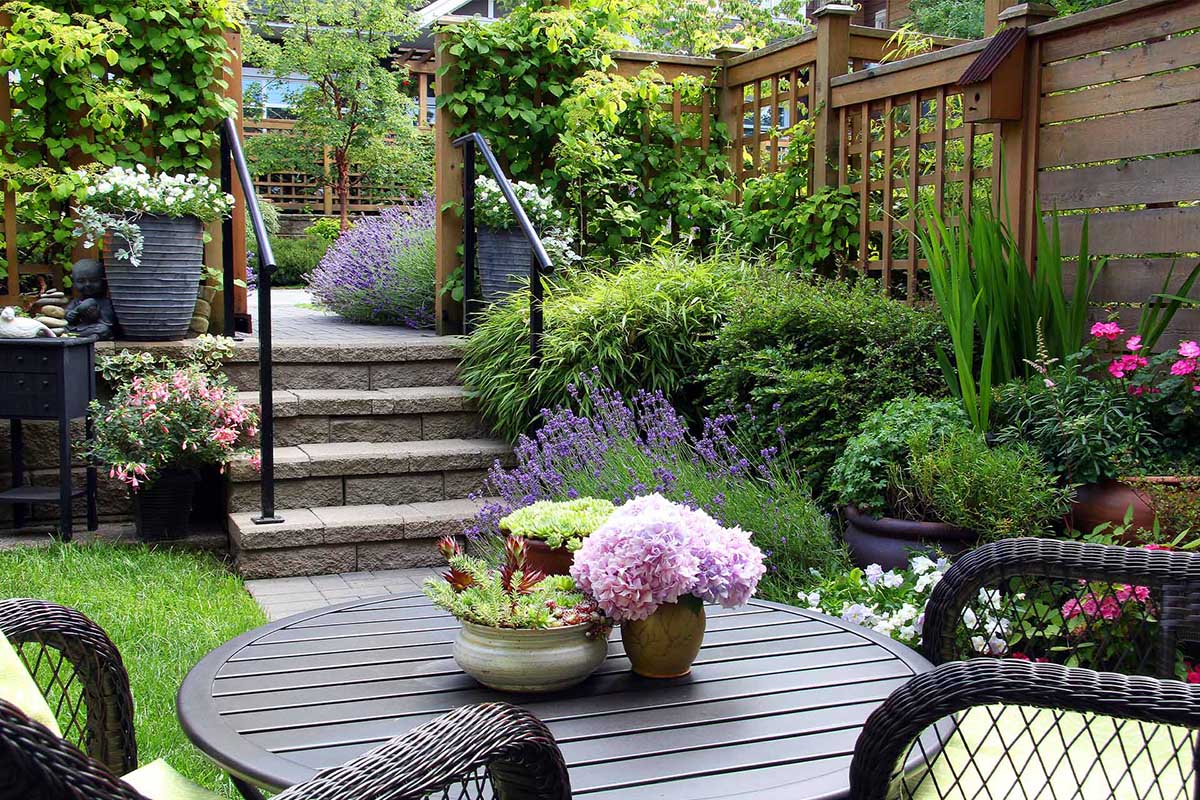

Garden Essentials
How Much To Charge For A Landscape Design
Modified: March 7, 2024
Looking to design your dream garden? Find out how much to charge for a landscape design and transform your outdoor space into a vibrant oasis.
(Many of the links in this article redirect to a specific reviewed product. Your purchase of these products through affiliate links helps to generate commission for Storables.com, at no extra cost. Learn more)
Introduction
When it comes to charging for landscape design services, finding the right pricing strategy can sometimes be a bit of a challenge. Determining how much to charge involves considering various factors, such as the time and effort required, your expertise and experience, the scope of the project, the location and market you serve, the level of competition, the client’s budget, and any value-added services you may offer.
In this article, we will take a closer look at each of these factors and discuss how they can influence your pricing decisions. By understanding these key considerations, you will be able to develop a fair and competitive pricing structure that benefits both you and your clients.
Now, let’s dive into the factors to consider when determining how much to charge for your landscape design services:
Key Takeaways:
- Pricing landscape design involves considering time, expertise, project scope, location, competition, client budget, and value-added services. Accurate cost estimation and transparent communication are crucial for fair pricing.
- Different pricing strategies, such as hourly rates, fixed fees, package pricing, and additional charges, offer flexibility and clarity for clients. Understanding market dynamics and delivering value are key to successful pricing.
Factors to Consider
When establishing your pricing for landscape design services, several factors come into play. These factors help ensure that your pricing is fair, competitive, and accounts for the value you provide. Let’s explore these factors in more detail:
- Time and Effort: Consider how much time and effort will be required to complete the project. Take into account the initial consultation, site visits, design development, revisions, and project management. Projects that require more time and effort should naturally command a higher price.
- Expertise and Experience: Your level of expertise and experience in landscape design is a significant factor in setting your pricing. Clients are often willing to pay more for design professionals with a proven track record and a high level of skill. Highlight your qualifications and showcase any certifications or awards you have received.
- Scope of the Project: The scope of the project directly impacts the amount of work involved and, subsequently, your pricing. Consider factors such as the size of the landscape, the complexity of the design, the number of elements to be incorporated (such as patios, walkways, water features, etc.), and any specialized requirements.
- Location and Market: The location in which you operate and the local market conditions can influence pricing. Designers in major urban areas or affluent neighborhoods often have higher pricing due to increased demand and higher cost of living. Research the market in your area to ensure your pricing is competitive.
- Competition: Consider the level of competition in your area. If there are many other landscape designers offering similar services, you may need to adjust your pricing to remain competitive. Highlight what sets you apart from your competitors to justify your pricing.
- Client Budget: It’s essential to understand your client’s budget and align your pricing accordingly. Some clients may have a specific budget in mind, while others may be looking for guidance on what they can expect to spend. Be transparent about your pricing and help clients understand the value they will receive.
- Value-added Services: If you offer additional services such as ongoing maintenance, project coordination, or sourcing of materials, factor these into your pricing. These value-added services can differentiate you from other designers and justify a higher price.
By carefully considering these factors, you can develop a pricing structure that reflects the value you provide and meets the unique requirements of each project and client.
Time and Effort
One of the key factors to consider when determining how much to charge for landscape design services is the amount of time and effort required to complete a project. Every project is unique, and the time and effort invested can vary significantly depending on factors such as the size and complexity of the design, the site conditions, and the client’s specific needs and preferences.
When estimating the time and effort required for a project, it is important to break it down into different stages and tasks. This includes the initial consultation and site visit, design development, revisions, and project management. Each stage requires careful attention to detail and a significant investment of time.
During the initial consultation, you will meet with the client to understand their vision, discuss their requirements, and assess the site conditions. This includes analyzing the soil quality, sunlight exposure, drainage, and other factors that can impact the design. This stage alone can take several hours, especially for larger or more complicated projects.
The design development stage is when you create the actual landscape design plan. This includes creating a layout, selecting plants and materials, and incorporating any special features or elements requested by the client. This stage requires creativity and expertise, and the time invested can vary depending on the complexity of the design. Design revisions are also common, as clients may have specific changes or adjustments they would like to make.
Once the design is finalized, the project management stage begins. This involves overseeing the implementation of the design, coordinating with contractors, and ensuring that the project progresses smoothly. Depending on the scale and scope of the project, project management can be a time-consuming task that requires regular site visits and communication with the client and contractors.
In addition to these stages, it is crucial to account for administrative tasks such as preparing contracts, creating proposals, and communicating with the client throughout the project. These tasks may not be directly related to the design process but are essential for running a successful landscape design business.
It is important to accurately estimate the time and effort required for each project to ensure that your pricing is both fair to you and your clients. Keep in mind that some projects may require more time and effort than initially anticipated, so it is wise to build in some flexibility to accommodate unforeseen challenges or revisions.
By considering the time and effort involved in each stage of the design process, you can determine a pricing structure that adequately reflects the value you provide as a landscape designer.
Expertise and Experience
When it comes to pricing landscape design services, your expertise and experience play a vital role in determining your value in the market. Clients are often willing to pay more for designers who have a proven track record of delivering high-quality designs and successfully executing projects.
As a landscape designer, your expertise goes beyond simply having a creative eye for design. It encompasses your knowledge of plants, horticulture, environmental considerations, and the ability to integrate various elements to create functional and visually appealing spaces. Your expertise also extends to understanding the local climate, soil conditions, and other factors that can impact the success of a landscape design.
Clients value the insights and recommendations that come from your experience working on similar projects. Your experience allows you to anticipate challenges, suggest alternative solutions, and provide guidance based on what has worked well in the past. This level of expertise and experience instills confidence in clients and justifies a higher price point for your services.
It is important to highlight your expertise and experience when discussing pricing with potential clients. Showcase your portfolio to demonstrate the range and quality of the projects you have completed. Highlight any certifications or specialized training you have obtained, as these credentials can add additional credibility to your services.
Keep in mind that expertise and experience are not static. It is essential to continue expanding your knowledge and staying updated with industry trends and advancements. This ongoing commitment to professional development allows you to offer the latest design techniques, incorporate sustainable practices, and provide innovative solutions to your clients.
As your expertise and experience grow, you may consider adjusting your pricing to reflect the added value you bring to each project. This can be justified by the level of skill, knowledge, and insights you bring to the table, ultimately delivering more value to your clients.
Remember, your expertise and experience are valuable assets that differentiate you from competitors. By emphasizing these qualities and aligning your pricing accordingly, you can establish yourself as a trusted and sought-after landscape designer in the market.
Scope of the Project
The scope of a landscape design project is a crucial factor to consider when determining how much to charge for your services. The scope refers to the size, complexity, and specific requirements of the project. Projects with a larger scope generally require more time, resources, and expertise, and should be reflected in your pricing structure.
When assessing the scope of a project, consider the following factors:
- Size of the Landscape: The size of the landscape is a primary consideration. Larger landscapes typically involve more design elements and require more time to complete. Larger projects often include multiple outdoor areas, such as front yards, backyards, and side yards, each with their own unique design requirements.
- Complexity of the Design: The complexity of the design is another aspect of the project scope. Intricate designs that involve multiple levels, terracing, intricate plantings, water features, and special structures or outdoor amenities require more expertise and attention to detail. These complex designs often require additional time and effort to develop and implement.
- Number of Elements: Consider the number and variety of elements that are to be included in the design, such as patios, walkways, lighting, irrigation systems, plantings, and outdoor structures. The more elements involved, the more time and effort required to incorporate them seamlessly into the overall design. Each element may also require additional coordination with contractors or specialists.
- Specialized Requirements: Some projects may have unique or specialized requirements that add complexity to the scope. This could include specialized soil or water management needs, compliance with local building codes or regulations, or the use of sustainable and environmentally friendly design principles. These specialized requirements often demand additional expertise and effort to address effectively.
By considering these factors, you can accurately assess the scope of the project and determine a fair and realistic price. Larger projects with a higher level of complexity and specialized requirements typically warrant higher pricing due to the increased time, effort, and expertise involved.
It is also important to communicate with the client about their expectations and specific requirements for the project. Clarify what is included in your design services and what may incur additional costs. Being transparent about the scope from the beginning helps manage client expectations and avoids any misunderstandings down the line.
Remember, the scope of the project directly impacts the amount of work involved and should be a key consideration when determining your pricing. By accurately assessing the scope, you can provide an estimate that accurately reflects the value you will deliver as a landscape designer.
Read more: How Do You Charge For Landscaping
Location and Market
When determining how much to charge for your landscape design services, the location in which you operate and the local market conditions are important factors to consider. The demand for landscape design services can vary based on the geographic area, and the market conditions in that area can influence pricing.
In major urban areas or affluent neighborhoods, there is often a higher demand for landscape design services due to the concentration of high-end properties and homeowners who value outdoor living spaces. In these areas, clients may be willing to pay a premium for quality landscape design. Additionally, the cost of living and operating a business in these areas tend to be higher, which can also impact pricing.
On the other hand, in more rural or less affluent areas, the demand for landscape design services may be lower. Clients in these areas may have smaller budgets or may prioritize other expenses over landscaping. Therefore, pricing in these areas will typically be more moderate to align with the local market conditions.
Researching the local market is crucial in understanding the pricing expectations and competition in your area. Analyze the pricing strategies of other landscape designers in your vicinity to ensure your rates are competitive. Assess the services they offer, the quality of their work, and the prices they charge to gain insights into the local market landscape.
It is also important to consider the local economic conditions and trends. If the local economy is experiencing a boom, with new development projects and increased property values, the demand for landscape design services may be higher, allowing you to adjust your pricing accordingly. Conversely, during economic downturns, it may be necessary to be more flexible with pricing to attract clients and stay competitive.
Additionally, the demographic makeup of your target market can impact pricing. If your area has a high concentration of retirees or individuals with disposable income, you may be able to charge higher rates for your services. Conversely, if your market primarily consists of young families or individuals with limited budgets, pricing should be adjusted accordingly to appeal to this demographic.
Remember, location and market conditions vary, and it is essential to understand the unique dynamics of your specific area. By taking into account the local market demand, competition, and economic factors, you can develop pricing that aligns with the expectations and needs of your target market.
Competition
Understanding the level of competition in your area is a crucial factor when determining how much to charge for your landscape design services. The landscape design industry can be highly competitive, with numerous designers vying for the same pool of clients. To set your pricing strategy effectively, it is essential to assess the competition and find ways to differentiate yourself.
Start by researching other landscape designers and design firms in your area. Analyze their services, their pricing structure, and the quality of their work. Look for any gaps or niches in the market that you can fulfill. Assess what sets you apart from your competition and emphasize those unique selling points when discussing pricing with clients.
While it may be tempting to lower your prices to undercut the competition, be cautious about engaging in a price war. Competing solely on price can be detrimental to your business and undermine the value of your services. Instead, focus on highlighting the value and quality you provide, showcasing your expertise, and demonstrating the unique benefits of working with you.
Consider the following strategies when pricing your services within a competitive landscape:
- Specialize: Identify a niche or specialized area within landscape design where you can differentiate yourself. This could be expertise in sustainable design, native plantings, or a specific design style that appeals to a particular target market.
- Emphasize Quality: Emphasize the quality of your work and the attention to detail that sets you apart. Highlight any awards or recognition you have received, as well as client testimonials that speak to the excellence of your services.
- Provide Exceptional Customer Service: Go above and beyond in customer service to create a positive experience for your clients. Respond promptly to inquiries, listen attentively to their needs, and provide clear communication throughout the project. Exceptional customer service can set you apart and justify higher pricing.
- Offer Unique Value-Added Services: Consider providing additional services that go beyond traditional landscape design. This could include ongoing maintenance packages, landscape coaching, or personalized plant care consultations. These value-added services can justify a higher price point and give you an edge over competitors.
- Build Your Reputation: Invest in building your reputation and brand presence. Use social media, a professional website, and online platforms to showcase your work, share design tips, and build a loyal following. Establishing yourself as an industry expert can make you the go-to landscape designer in your area, allowing you to command higher prices.
Remember, differentiation is key in a competitive landscape. By focusing on providing exceptional quality, exceptional customer service, and unique value-added services, you can carve out your niche and set your pricing accordingly.
Client Budget
Understanding your client’s budget is a crucial factor in determining how much to charge for your landscape design services. Each client will have a unique budgetary constraint, and it is essential to align your pricing with their financial expectations. By considering their budget, you can provide appropriate design options and tailor your services to meet their specific needs.
During the initial consultation, candidly discuss the client’s budget and what they are comfortable spending on their landscape design project. This conversation will help you understand their financial limitations and guide your pricing decisions. Be respectful of their budget and offer solutions that provide the best value within their means.
It is important to educate your clients about the cost factors involved in landscape design. Explain how different design elements, materials, and labor requirements can impact pricing. Provide them with a breakdown of costs and help them understand the value that your services bring to the project. This transparency will foster trust and ensure that both parties are on the same page.
If a client’s budget is lower than your standard rates, consider offering alternative options that align with their financial limitations. This could involve scaling down the scope of the project, suggesting cost-effective materials, or phasing the project over time to accommodate their budget. By working collaboratively and creatively, you can find solutions that meet both their needs and financial constraints.
Alternatively, if a client has a higher budget and is seeking premium design services, ensure that your pricing reflects the level of luxury and customization they desire. Highlight the additional value and features they will receive at a higher price point, such as unique design elements, high-end materials, or specialty services.
Remember that clients have different priorities and may be willing to invest more in certain aspects of their landscape design. Some may prioritize hardscape features like patios or outdoor kitchens, while others may seek lush garden plantings. Understanding their preferences will help you allocate their budget accordingly and provide a personalized design experience.
Flexibility is key when working with various client budgets. By aligning your pricing with their financial expectations and offering tailored solutions, you can provide a positive experience that meets their needs while ensuring a fair compensation for your design services.
When determining how much to charge for a landscape design, consider factors such as the size of the project, the complexity of the design, and your level of expertise. Research local market rates to ensure your pricing is competitive.
Value-added Services
When determining how much to charge for your landscape design services, it is important to consider the value-added services you provide. These additional services can enhance the overall client experience, differentiate you from competitors, and justify a higher price point.
Value-added services are extras that go beyond the core landscape design process and provide added value to the client. They can encompass a range of offerings tailored to meet specific client needs and preferences. Here are some examples:
- Ongoing Maintenance: Offer maintenance packages to help clients keep their newly designed landscape looking pristine. This could include regular lawn care, pruning, plant replacements, and seasonal maintenance tasks. Providing ongoing maintenance ensures the long-term success of the design and the client’s investment.
- Landscape Coaching: Provide coaching sessions to educate clients on how to care for their landscape themselves. This can involve teaching them proper plant care, watering techniques, pruning methods, and other essential skills. Landscape coaching empowers clients to take an active role in maintaining their outdoor space and can be a valuable service for those with a DIY mindset.
- Plant Selection and Sourcing: Offer expertise in plant selection and sourcing. Help clients choose the right plants for their specific needs, considering factors such as climate, soil conditions, maintenance requirements, and aesthetics. Assist them in finding reputable nurseries or suppliers to purchase the plants, ensuring they receive quality specimens.
- Project Coordination: Take on the role of project coordinator, managing various contractors and tradespeople involved in the implementation of the design. This can relieve clients of the stress and time-consuming task of coordinating multiple parties. Act as a central point of communication, ensuring that the project progresses smoothly and efficiently.
- Specialty Installations: Offer specialized installations such as water features, outdoor lighting, or sustainable design features. These unique elements can add value and enhance the overall design aesthetic. By providing specialized installations, you position yourself as a designer who can deliver custom and exclusive outdoor spaces.
When determining the pricing for these value-added services, consider the additional time, expertise, and resources required to deliver them. Factor in any additional costs such as tools, materials, or subcontractors that may be necessary to provide these services.
Communicate the value of these services to the client and how they can enhance their overall experience and satisfaction with the landscape design project. Emphasize the advantages of having a comprehensive and holistic approach to landscaping, where all aspects of design, implementation, and maintenance are taken care of by a single provider.
By offering value-added services, you not only differentiate yourself from competitors but also build long-term relationships with clients. Providing ongoing support and guidance after the initial design ensures client satisfaction and can lead to referrals and repeat business.
Remember, these value-added services are an opportunity to exceed client expectations and deliver exceptional value. They can be a significant factor in setting your pricing and establishing your reputation as a comprehensive and customer-oriented landscape designer.
Read more: How To Design A Low-Maintenance Landscape
Pricing Strategies
Determining the right pricing strategy for your landscape design services is crucial for running a successful business. There are several pricing strategies you can consider, each with its own advantages and considerations. Let’s explore some common pricing strategies:
- Hourly Rate: Charging an hourly rate is a straightforward approach to pricing. You determine your desired hourly rate and track the hours spent on each project. This method is suitable for projects with varying scopes and complexities. However, it can be challenging to estimate the total cost accurately, and clients may be concerned about costs adding up if the project extends beyond the estimated hours.
- Fixed Fee: With a fixed fee pricing strategy, you provide clients with a set price for the entire project. This approach requires a thorough understanding of the project requirements and scope. It provides clients with a clear expectation of the cost upfront, reducing uncertainty. However, it is crucial to carefully assess the scope and potential changes that may arise during the project to avoid underestimating the time and effort required.
- Package Pricing: Offering package pricing involves bundling specific services or design elements together at a set price. This strategy simplifies the pricing process for both you and the client and allows for easy comparison of different package options. It can also be an effective way to showcase your value-added services. However, ensure that your packages are flexible enough to accommodate varying client needs and preferences.
- Percentage of Construction Cost: Some landscape designers base their pricing on a percentage of the overall construction cost. This approach is common when there is a significant construction or installation component involved in the design. It aligns the designer’s compensation with the perceived value delivered. However, ensure that the percentage-based fee accurately reflects the level of design and expertise involved rather than solely relying on construction costs.
- Tiered Pricing: Tiered pricing involves offering different levels of service or design options at varying price points. This allows clients to choose a package that best fits their budget and needs. By offering multiple price tiers, you can cater to a wider range of clients without compromising on quality. It also provides an opportunity for upselling by enticing clients to opt for a higher tier with additional services or premium features.
When selecting a pricing strategy, consider your target market, your level of expertise, and the value you provide. It is also important to evaluate the pricing strategies employed by your competitors to ensure that your rates are competitive within the market.
Whichever pricing strategy you choose, transparency and effective communication with your clients are essential. Clearly outline what is included in your pricing and any additional services or charges that may apply. Be open to discussing pricing options and finding a solution that works for both you and your clients.
Regularly review and assess your pricing strategy to ensure it remains aligned with market trends, your overhead costs, and the value you provide. By continually refining your pricing strategy, you can maintain profitability while delivering exceptional landscape design services to your clients.
Hourly Rate
One common pricing strategy for landscape design services is charging an hourly rate. With this approach, you determine the hourly rate you want to charge for your services and track the time spent on each project. Your hourly rate should reflect your expertise, experience, and the value you bring to the clients’ projects.
The hourly rate pricing strategy offers several advantages. It provides transparency as clients can see exactly how much time is spent on their project and the corresponding cost. It suits projects with varying scopes and complexities, as the time spent can be directly correlated to the work involved. This approach can also be flexible, allowing for adjustments if the project scope changes or additional design services are requested.
When determining your hourly rate, it is important to consider various factors:
- Experience and Expertise: Your level of experience and expertise should influence your hourly rate. Clients are willing to pay more for a designer with a proven track record and specialized knowledge. Highlight your qualifications, certifications, and previous successful projects when Justifying your rate.
- Overhead Costs: Consider your overhead costs, such as office rent, utilities, software, and equipment. These costs should be factored into your hourly rate to ensure that you cover your expenses and maintain profitability.
- Industry Standards: Research the industry standards in your region to get an idea of the prevailing hourly rates for landscape design services. This information will help you position your rates competitively within the market.
- Market Demand: The demand for design services in your area affects your pricing. In areas with high demand, you may be able to justify a higher hourly rate. In contrast, if the market is more competitive, you may need to adjust your pricing strategy to remain competitive.
- Efficiency and Productivity: Assess your own efficiency and productivity to determine an appropriate hourly rate. It is important to strike a balance between charging a rate that adequately compensates you while ensuring that it remains reasonable for the client.
Communicate your hourly rate to potential clients upfront and provide estimates of the total time required for their project. Transparency about your pricing ensures that clients understand how your services are valued and what they can expect in terms of costs.
However, it’s worth noting that some clients may express concerns about the uncertainty of costs when the project extends beyond the estimated hours. To address this, you can implement project milestones or regular progress updates to keep clients informed about the time spent and any significant changes in the estimated total cost.
Lastly, keep in mind that while an hourly rate provides transparency, it may not always be the most suitable pricing strategy for every project. Consider the scope, complexity, and budget of each project when determining whether an hourly rate is the best approach, or if another pricing strategy, such as a fixed fee or package pricing, may be more appropriate.
Fixed Fee
Another common pricing strategy for landscape design services is the fixed fee approach. With this strategy, you provide clients with a set price for the entire project rather than charging an hourly rate. This method offers clarity and predictability to clients, as they know the total cost upfront, regardless of the actual hours spent on the project.
When determining a fixed fee, it is essential to thoroughly understand the project requirements and scope. Evaluate the complexity, size, and specific design elements required to complete the project to accurately assess the amount of time and effort involved.
Benefits of using a fixed fee pricing strategy include:
- Clarity: Clients appreciate the clarity and transparency that comes with knowing the total cost of the project before it begins. It eliminates the uncertainty of hourly rates and provides a clear expectation of the financial commitment required.
- Client Budget Management: Fixed fees help clients manage their budget more effectively. They can plan and allocate funds accordingly, knowing the total cost of the project upfront, which can be especially important for homeowners with limited budgets.
- Simplicity: Fixed fees simplify the payment process for both you and your clients. There is no need to keep track of hours or provide detailed time reports. Instead, you can focus on delivering high-quality designs within the agreed-upon scope.
- Scope Boundaries: A fixed fee forces you to clearly define the scope of the project. It helps you avoid scope creep and ensures that both you and the client have a clear understanding of what is included in the agreed-upon fee. Any additional services or scope changes can be addressed with a separate fee arrangement.
It is important to be thorough and accurate when determining the fixed fee for a project. Consider the following factors:
- Project Complexity: Evaluate the complexity of the design elements, site conditions, and construction requirements. Complex projects with intricate designs or challenging site conditions may require more time and effort to complete.
- Design Requirements: Consider the specific design elements, materials, and features that the client requires. The level of customization and attention to detail will impact the amount of work involved and should be reflected in the fixed fee.
- Market Analysis: Research the industry standards and market rates for similar projects in your area. Review competitors’ pricing to ensure that your fixed fee is competitive, taking into account your level of expertise and the value you provide.
- Contingencies and Revisions: Anticipate potential contingencies and revisions that may arise during the project. It is essential to build some flexibility into your fixed fee to accommodate changes requested by the client or unforeseen challenges that may arise.
Clearly communicate to the client what is included in the fixed fee and any limitations or exclusions. Providing a detailed project proposal and contract ensures that both parties are aligned on expectations and minimizes the risk of misunderstandings or disputes later on.
While a fixed fee offers clarity, it may require careful estimation and consideration of potential contingencies. Be thorough in your assessment and be prepared to adjust the fixed fee if the project scope significantly changes during the design process.
Overall, the fixed fee pricing strategy offers simplicity and predictability for clients, allowing them to budget effectively for their landscape design project.
Package Pricing
Package pricing is a strategic approach to pricing landscape design services that involves offering different service packages at set prices. This approach simplifies the pricing process for both you and your clients by bundling specific services together based on their needs and preferences. Package pricing allows clients to choose the package that best aligns with their budget and requirements, providing them with options that cater to different levels of service and customization.
When implementing package pricing, consider the following factors:
- Service Differentiation: Develop packages that differentiate the level of service and value offered. Consider the specific services included in each package, such as initial consultation, site analysis, design development, 3D renderings, project management, and more. Higher-tier packages can offer additional services or more in-depth consultations to command a higher price.
- Design Options and Customizability: Offer different design options within each package to cater to varying client preferences. This can include different styles, materials, or plant selection. Provide clients with the flexibility to customize certain elements within the chosen package to suit their specific tastes.
- Value Proposition: Clearly communicate the value clients will receive in each package. Highlight the unique features, benefits, and added value they can expect. Emphasize how each package will meet their specific needs and offer a comprehensive solution to their landscape design requirements.
- Pricing Structure: Determine the pricing for each package based on market research, the level of effort required, and the value offered. Consider the specific design elements, the time involved, and any additional services included in each package. It is crucial to price the packages competitively while ensuring a reasonable profit margin.
- Flexibility: Offer flexibility within the packages to accommodate varying client needs. Allow clients to add-on extra services or features at an additional cost. Also, provide the option for clients to upgrade to a higher-tier package if they require more comprehensive services or customization.
Package pricing provides several benefits for both you and your clients:
- Simplicity: Package pricing simplifies the decision-making process for clients by offering clear and defined options. Clients can easily compare the different packages and select the one that best suits their needs and budget, eliminating the need for complex customization negotiations.
- Value Perception: By packaging services, you reinforce the value your design services provide. Clients can clearly see the services and benefits they will receive at each price point, creating a perception of value and making it easier for them to justify the price.
- Upselling Opportunities: Package pricing allows for upselling by providing clients with options to upgrade to higher-tier packages or add-on additional services. This can increase the overall project value and generate additional revenue while providing clients with a more comprehensive and tailored design experience.
- Efficiency: Having predefined packages streamlines your workflow as it eliminates the need to develop custom proposals and pricing for each client. Instead, you can focus on delivering the specific services outlined in the selected package, reducing administrative tasks and increasing efficiency.
Clearly present the package options and their respective prices to clients. Provide detailed descriptions of what is included in each package to ensure transparency and manage expectations. Communicate the option for customization or additional services within each package, so clients have the flexibility to adjust the package to their specific needs.
Periodically review and update your package pricing to reflect market trends, changes in services offered, and client preferences. This helps ensure that your pricing remains competitive, relevant, and reflective of the value you provide.
Ultimately, package pricing enables you to cater to a range of client needs while streamlining your pricing and providing clarity and value to clients in a simplified manner.
Read more: How Much To Charge For Plumbing Work
Additional Charges
In addition to the base pricing for landscape design services, there may be instances where additional charges are necessary to account for specific circumstances or services that go beyond the standard scope of work. By clearly communicating these additional charges to your clients, you can ensure transparency and avoid any misunderstandings or surprises.
Here are some situations where additional charges may apply:
- Site Assessments: If the project requires extensive site assessments, such as soil testing, land surveying, or specialized inspections, these costs may be passed on to the client.
- Project Permits and Fees: Certain projects may require permits, licenses, or fees from local authorities or homeowner associations. These expenses are typically the responsibility of the client and should be clearly communicated from the beginning.
- Travel Expenses: If the project is located outside of your typical service area, travel expenses such as mileage, accommodation, and meals may be billed to the client. Be transparent about these charges and discuss them with the client upfront.
- Specialized Equipment or Materials: Some design elements may require the use of specialized equipment or materials that are not covered by the standard pricing. In these cases, the cost of acquiring or renting such equipment, as well as the cost of specialized materials, may be billed separately.
- Coordination of Subcontractors: If you need to engage subcontractors or specialists, such as hardscape installers, electricians, or irrigation experts, their fees and expenses may be charged directly to the client. Clearly explain the roles and responsibilities of subcontractors and any associated costs early on in the project.
- Revisions or Changes in Scope: If the client requests changes or revisions that go beyond the agreed-upon scope of work, additional charges may apply. Be transparent about the cost implications of scope changes, and provide clients with an estimate of the additional fees before proceeding with the changes.
- Ongoing Maintenance and Service Contracts: If you offer ongoing maintenance or service contracts to keep the client’s landscape in good condition after the design project is completed, these services should be priced separately from the initial design services.
To manage client expectations and minimize disputes regarding additional charges, clearly outline these potential costs in your project proposal, contract, or fee agreement. Explain the circumstances in which they may occur and provide estimates or ranges, if possible.
When discussing additional charges with clients, emphasize the value or necessity of the service or expense. Clearly communicate the benefits and how these additional services contribute to a successful and comprehensive landscape design project.
Regularly review and evaluate your pricing structure for additional charges to ensure that they accurately reflect the costs involved and align with market standards. Make sure to document any signed agreements or approvals related to additional charges to maintain a record and ensure clarity with the client.
By openly communicating additional charges and addressing them proactively, you can foster trust with your clients and maintain transparency throughout the landscape design process.
Estimating Costs
Estimating costs accurately is a critical aspect of pricing landscape design services. By carefully assessing the various components of a project, you can provide clients with a fair and realistic cost estimate. Here are some key considerations for estimating costs effectively:
- Break Down the Project: Divide the landscape design project into smaller tasks or stages. This allows you to estimate the time and effort required for each component and ensures that all aspects of the project are accounted for in your cost estimation.
- Consider the Scope of Work: Assess the scope of the project and the specific tasks involved. Determine the level of complexity, the number of design elements, and any special considerations that will impact the time and effort needed to complete the project.
- Material and Plant Selection: Research and calculate the costs of materials and plants required for the project. Consider factors such as the quantity, quality, and availability of materials in your area. Be sure to account for any fluctuations in prices due to seasonal variations or market conditions.
- Labor and Expertise: Evaluate the time and effort required from you and any team members involved in the project. Consider factors such as your hourly rate, the number of hours you anticipate spending on each task, and any subcontractors that may be necessary for specialized work.
- Equipment and Tools: Determine if any specialized equipment or tools are needed for the project. Include the costs of renting or purchasing these items when estimating the overall project costs.
- Contingency: It is wise to include a contingency buffer in your cost estimation to account for unforeseen circumstances or changes that may arise during the project. A contingency of around 10% of the total estimated cost is generally recommended to address unexpected expenses.
- Research and Benchmarking: Conduct research to familiarize yourself with the prevailing market rates and pricing standards in your area. Review similar projects and their associated costs to ensure that your estimations align with industry norms and remain competitive.
- Communication with Suppliers and Contractors: Maintain open lines of communication with suppliers, contractors, and other professionals involved in the project. Seek quotes or estimates from them to gain accurate insights into the costs of materials, services, and specialized work.
- Review and Adjust: Regularly review and adjust your cost estimation process based on feedback, experience, and lessons learned from previous projects. Continuously refine and improve your estimation methods to ensure accuracy and efficiency.
When presenting the cost estimate to clients, provide a detailed breakdown of each expense category and explain the components that contribute to the overall project cost. This transparent approach helps clients understand how their investment in your services will be allocated.
It is important to note that cost estimation is not an exact science, and unexpected challenges may arise during a project. Maintain open lines of communication with clients throughout the project and be prepared to discuss any adjustments to the cost estimation if circumstances change significantly.
By utilizing a thorough and systematic approach to estimating costs, you can provide clients with reliable and accurate pricing, ensuring a fair compensation for your services while maintaining transparency and trust throughout the landscape design process.
Conclusion
Determining the right pricing for your landscape design services is a crucial aspect of running a successful business. By considering various factors such as time and effort, expertise and experience, scope of the project, location and market, competition, client budget, value-added services, and pricing strategies, you can establish a fair and competitive pricing structure.
Understanding the time and effort required for each project allows you to accurately estimate costs and ensure that your pricing aligns with the value you provide. Your expertise and experience play a significant role in setting your pricing, as clients are willing to pay more for your specialized knowledge and proven track record of successful projects.
The scope of the project directly influences the amount of work involved and should be a key consideration when determining your pricing. Whether it’s a small residential project or a large commercial development, accurately assessing the scope allows you to provide a fair estimate that reflects the complexity and level of customization required.
Location and market conditions also impact your pricing, with factors such as regional demand, local economic trends, and competition playing a role. Conduct market research to ensure that your pricing is competitive within your area and reflects the unique factors that influence the landscape design market in your region.
Value-added services can elevate your pricing by offering additional benefits and solutions to clients. These services, such as ongoing maintenance, landscape coaching, or specialized installations, provide added value and differentiate you from competitors in the market.
When it comes to pricing strategies, options such as hourly rates, fixed fees, package pricing, tiered pricing, or a percentage of construction costs can be effective. Choose a strategy that aligns with your business objectives, the services you offer, and the expectations of your target market.
Lastly, accurate cost estimation is crucial for providing clients with a transparent and reasonable pricing structure. By evaluating the various components of a project, considering market benchmarks, and maintaining open communication with suppliers and contractors, you can estimate costs accurately and ensure that your pricing is fair and reflective of the value you provide.
Overall, finding the right pricing balance involves a mix of thorough analysis, market research, understanding client expectations, and maintaining transparency. By implementing a thoughtful pricing strategy that accounts for all these factors, you can attract clients, deliver exceptional landscape design services, and achieve financial success in your business.
Frequently Asked Questions about How Much To Charge For A Landscape Design
Was this page helpful?
At Storables.com, we guarantee accurate and reliable information. Our content, validated by Expert Board Contributors, is crafted following stringent Editorial Policies. We're committed to providing you with well-researched, expert-backed insights for all your informational needs.
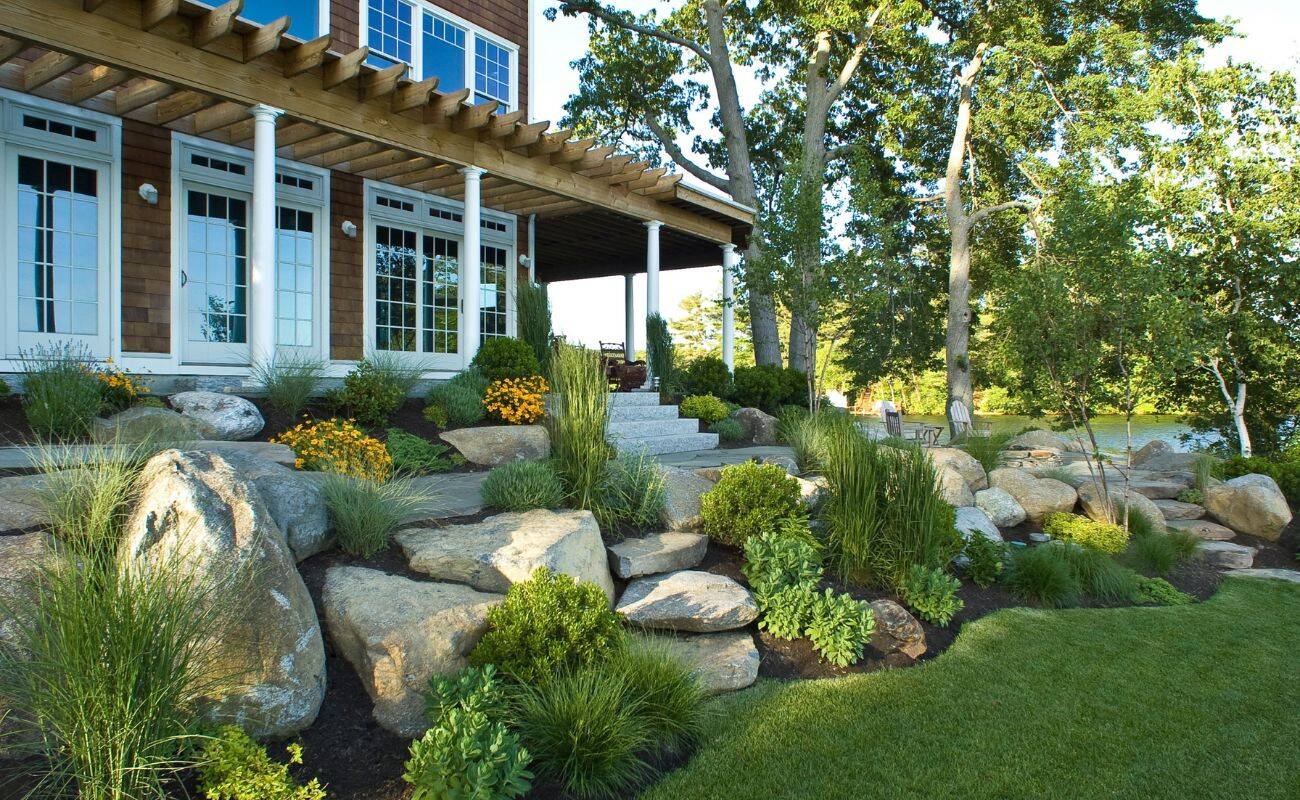

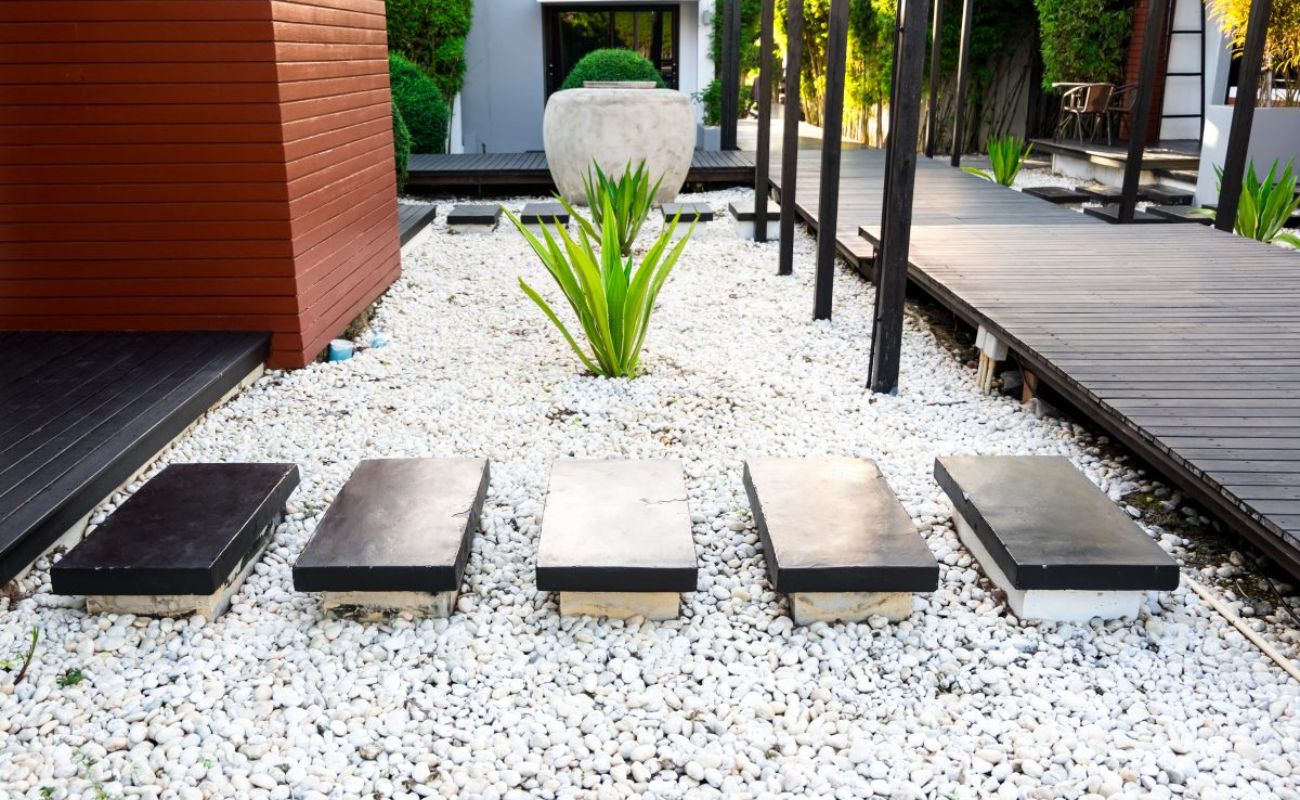
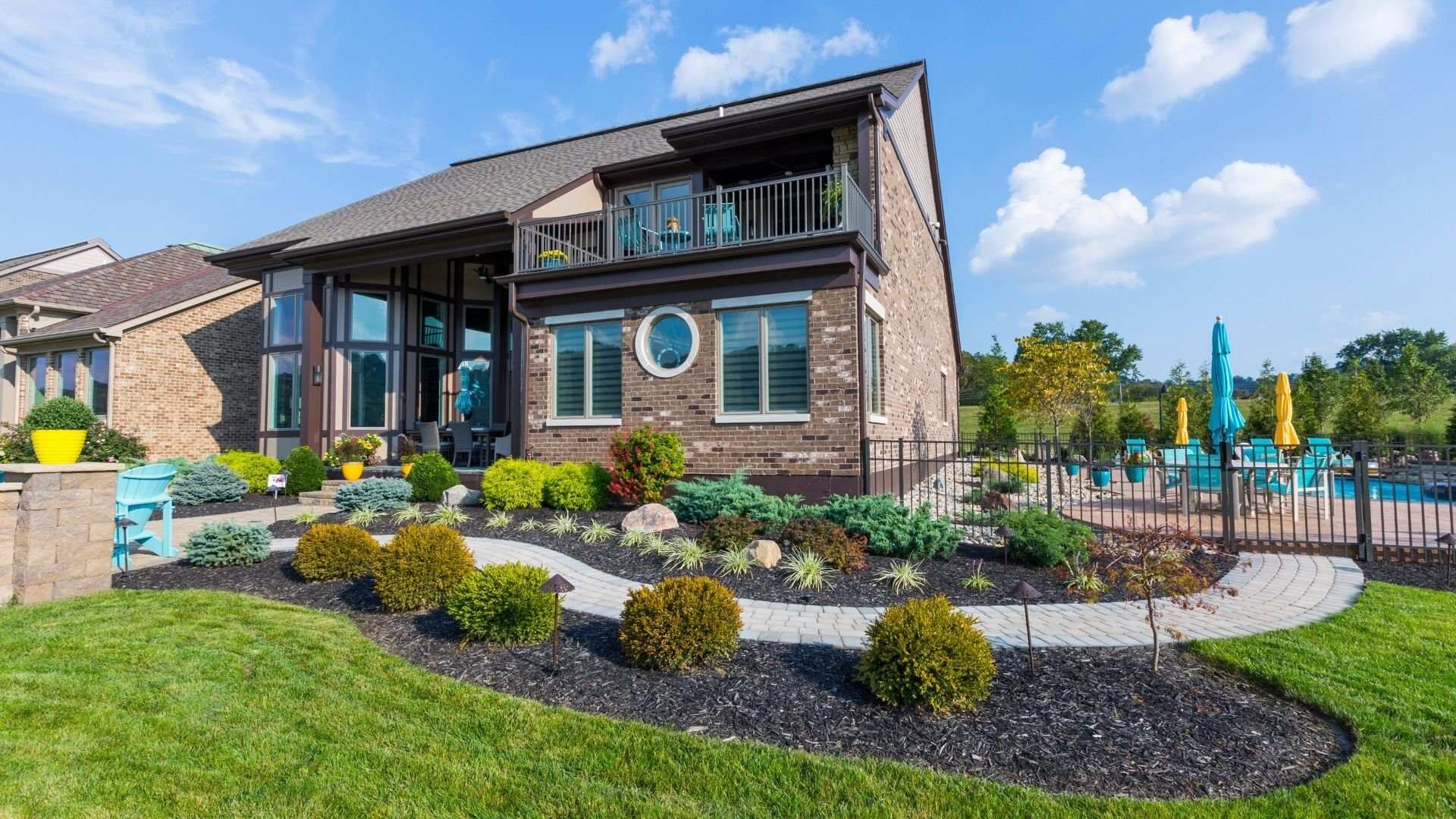



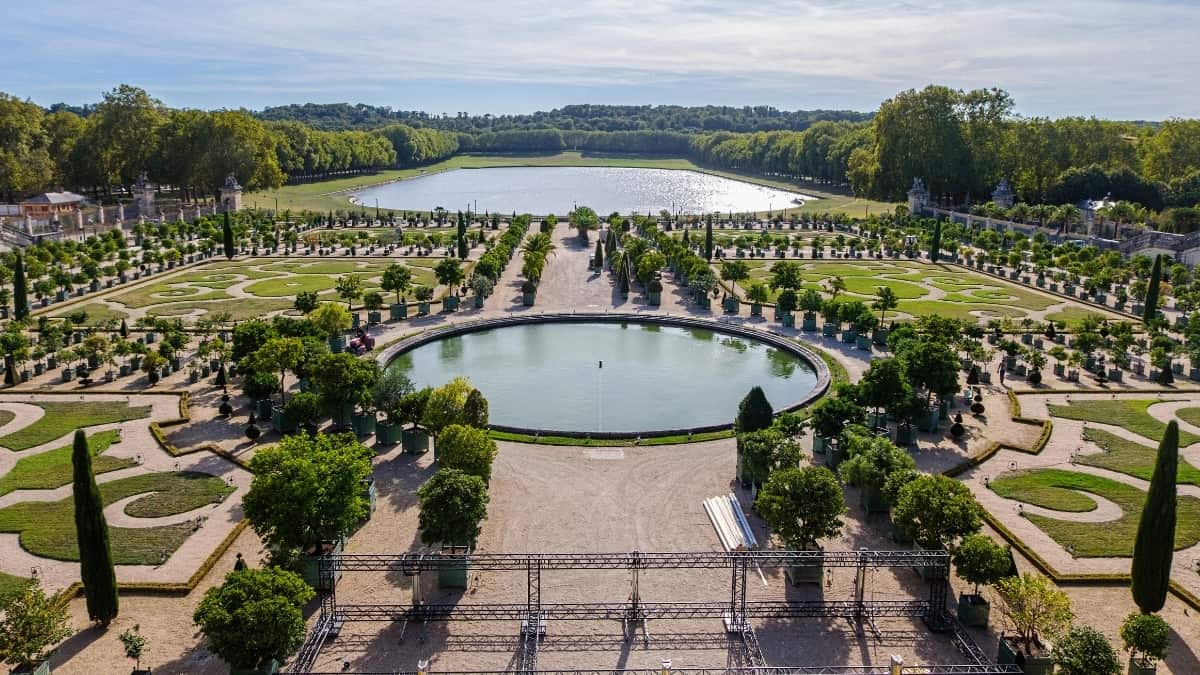


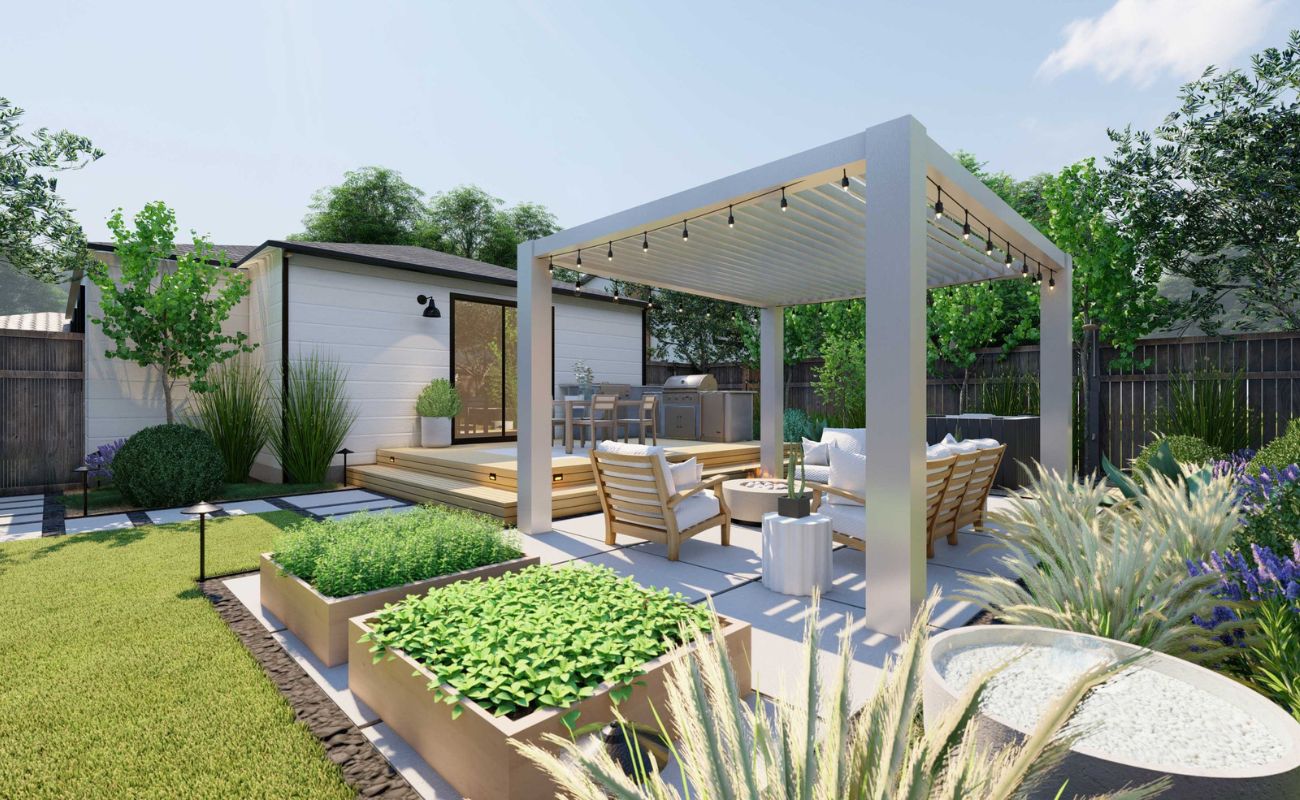


0 thoughts on “How Much To Charge For A Landscape Design”